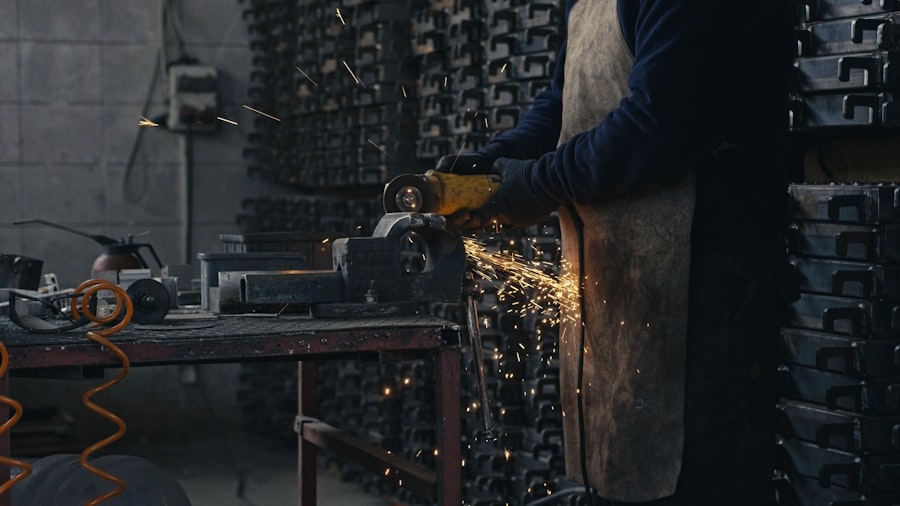As you delve into the world of Very Large Scale Integration (VLSI) jobs, you will discover a dynamic and rapidly evolving field that plays a crucial role in the technology landscape. VLSI refers to the process of creating integrated circuits by combining thousands or even millions of transistors into a single chip. This technology is foundational for modern electronics, powering everything from smartphones to advanced computing systems.
The demand for skilled professionals in VLSI design and development has surged, driven by the relentless pace of innovation in consumer electronics, telecommunications, and computing. In this competitive job market, you will find a variety of roles available, ranging from design engineers to verification specialists and test engineers. Each position requires a unique set of skills and knowledge, often necessitating a strong background in electrical engineering, computer science, or related fields.
As you explore these opportunities, it becomes evident that VLSI jobs not only offer attractive salaries but also the chance to work on cutting-edge technologies that shape the future. However, with the rise of artificial intelligence (AI) and automation, the landscape of VLSI jobs is undergoing significant transformation, presenting both challenges and opportunities for professionals in the field.
Key Takeaways
- VLSI jobs are facing significant changes due to the rise of AI and automation in the industry.
- Automation is impacting VLSI jobs, leading to job displacement and the need for reskilling among professionals.
- AI is playing a crucial role in creating new job opportunities in the VLSI industry.
- VLSI professionals need to adapt to AI disruption by developing new skills and strategies to stay relevant in the job market.
- The future of VLSI jobs will be shaped by the balance between automation and human expertise in the industry.
The Rise of AI in VLSI Design
The integration of artificial intelligence into VLSI design processes marks a significant shift in how you approach circuit design and optimization. AI algorithms are increasingly being employed to enhance various stages of the design flow, from initial concept development to final verification. By leveraging machine learning techniques, designers can analyze vast amounts of data to identify patterns and optimize designs more efficiently than ever before.
This not only accelerates the design process but also improves the overall quality of the final product. As you navigate this new landscape, you will notice that AI tools are being used to automate repetitive tasks that once consumed valuable time and resources. For instance, AI-driven tools can assist in layout generation, timing analysis, and even fault detection.
This allows engineers like you to focus on more complex and creative aspects of design, fostering innovation and pushing the boundaries of what is possible in VLSI technology. The rise of AI in VLSI design is not just a trend; it represents a fundamental shift that is reshaping the skills required for success in this field.
Automation’s Impact on VLSI Jobs

Automation is revolutionizing the way you work in the VLSI industry, streamlining processes and enhancing productivity. As automated tools become more sophisticated, they are capable of performing tasks that were once solely reliant on human expertise. This shift has led to increased efficiency in design cycles, allowing for faster time-to-market for new products.
However, it also raises questions about the future of traditional roles within the industry. While automation can lead to job displacement in certain areas, it also creates new opportunities for professionals who are willing to adapt. As you embrace these changes, you may find that your role evolves to encompass more strategic responsibilities, such as overseeing automated processes or integrating AI tools into your workflow.
The key lies in understanding how automation can complement your skills rather than replace them. By staying informed about emerging technologies and continuously updating your skill set, you can position yourself as an invaluable asset in an increasingly automated environment.
Job Displacement and Reskilling in the VLSI Industry
| Metrics | Data |
|---|---|
| Number of Job Displacements | 5000 |
| Percentage of Displaced Workers Reskilled | 70% |
| Top Skills in Demand | AI, Machine Learning, Embedded Systems |
| Average Time for Reskilling | 6 months |
The rapid advancement of automation and AI technologies has inevitably led to concerns about job displacement within the VLSI industry. As certain tasks become automated, you may find that some traditional roles are diminishing or evolving beyond recognition. This shift can be unsettling, especially for those who have invested years in developing specific skill sets tailored to conventional design processes.
However, rather than viewing this as a threat, it is essential to recognize the importance of reskilling and upskilling in this new landscape. Many organizations are actively investing in training programs to help their employees transition into roles that require a deeper understanding of AI and automation technologies. By embracing lifelong learning and seeking out opportunities for professional development, you can ensure that your skills remain relevant and aligned with industry demands.
The Role of AI in VLSI Job Creation
While concerns about job displacement are valid, it is equally important to acknowledge the potential for AI to create new job opportunities within the VLSI sector. As companies adopt AI-driven tools and methodologies, they require skilled professionals who can develop, implement, and maintain these systems. This shift opens up avenues for roles focused on AI algorithm development, data analysis, and system integration—areas that were previously less emphasized in traditional VLSI jobs.
Moreover, as you explore the intersection of AI and VLSI design, you may find that new niches are emerging within the industry. For instance, positions related to AI hardware development are becoming increasingly relevant as companies seek to optimize their chips for machine learning applications. By positioning yourself at the forefront of these developments and acquiring expertise in both VLSI design and AI technologies, you can carve out a unique career path that leverages the best of both worlds.
AI’s Influence on VLSI Job Market Trends

As you observe the job market trends within the VLSI industry, it becomes clear that AI is playing a pivotal role in shaping demand for specific skill sets. Employers are increasingly seeking candidates who possess a blend of traditional VLSI knowledge along with proficiency in AI methodologies. This trend reflects a broader shift towards interdisciplinary expertise, where professionals who can bridge the gap between hardware design and software intelligence are highly sought after.
In addition to technical skills, soft skills such as adaptability and problem-solving are becoming increasingly valuable in this evolving landscape. As you navigate your career path, consider how you can cultivate these attributes alongside your technical expertise. The ability to think critically about complex problems and adapt to new technologies will set you apart from your peers and position you as a leader in the field.
Challenges and Opportunities for VLSI Professionals in the Age of Automation
The age of automation presents both challenges and opportunities for professionals like you working in the VLSI industry. On one hand, the rapid pace of technological advancement can be daunting; keeping up with new tools and methodologies requires continuous learning and adaptation. You may find yourself facing pressure to quickly acquire new skills or adapt to changing workflows as automation becomes more prevalent.
On the other hand, this environment also fosters innovation and creativity. With routine tasks being automated, you have more time to focus on high-level design challenges and explore novel solutions. Embracing this shift can lead to exciting opportunities for collaboration with interdisciplinary teams, where your insights as a VLSI professional can contribute significantly to groundbreaking projects.
By viewing challenges as opportunities for growth and innovation, you can thrive in this dynamic landscape.
Ethical and Social Implications of AI in VLSI Jobs
As AI continues to permeate the VLSI industry, ethical considerations surrounding its implementation become increasingly important. You may find yourself grappling with questions about data privacy, algorithmic bias, and the societal impact of automation on employment. These issues require thoughtful consideration as you navigate your career in an industry that is fundamentally changing how we interact with technology.
Moreover, as a professional in this field, you have a responsibility to advocate for ethical practices within your organization and beyond. Engaging in discussions about responsible AI development and promoting transparency can help ensure that technological advancements benefit society as a whole rather than exacerbate existing inequalities. By taking an active role in shaping these conversations, you can contribute positively to the future of VLSI jobs and their impact on society.
Strategies for VLSI Professionals to Adapt to AI Disruption
To successfully navigate the disruptions brought about by AI in the VLSI industry, it is essential to adopt proactive strategies that enhance your adaptability and resilience. One effective approach is to invest time in continuous learning—whether through formal education programs, online courses, or self-directed study—focusing on both technical skills related to AI and soft skills such as communication and collaboration. Networking with peers and industry leaders can also provide valuable insights into emerging trends and best practices.
Engaging with professional organizations or attending conferences can help you stay informed about advancements in technology while expanding your professional network. Additionally, consider seeking mentorship from experienced professionals who have successfully navigated similar transitions; their guidance can be invaluable as you chart your own path forward.
The Future of VLSI Jobs in an AI-driven Industry
Looking ahead, the future of VLSI jobs appears promising yet complex as AI continues to reshape the industry landscape. While certain traditional roles may diminish due to automation, new opportunities will emerge that require a blend of technical expertise and innovative thinking. As companies increasingly rely on AI-driven solutions for design optimization and verification processes, professionals who can harness these technologies will be at the forefront of this evolution.
Moreover, as industries continue to integrate advanced technologies into their operations, the demand for skilled VLSI professionals will likely remain strong. By staying adaptable and continuously updating your skill set, you can position yourself as a leader in this exciting field—one that is poised for growth amid rapid technological change.
Balancing Automation and Human Expertise in VLSI Design
In conclusion, navigating the evolving landscape of VLSI jobs requires a delicate balance between embracing automation and leveraging human expertise. While AI presents challenges such as job displacement and ethical considerations, it also offers opportunities for innovation and growth within the industry.
Ultimately, the future of VLSI jobs will depend on your ability to integrate advanced technologies while maintaining a focus on creativity, problem-solving, and ethical considerations. By fostering collaboration between human ingenuity and machine intelligence, you can contribute meaningfully to shaping the future of technology—one where both automation and human expertise coexist harmoniously in driving progress forward.
The rapid advancement of artificial intelligence has sparked discussions about its potential impact on various industries, including VLSI (Very Large Scale Integration) design. As AI technologies continue to evolve, there is growing concern about whether they will eventually replace human jobs in this field. An interesting perspective on this topic can be found in a related article on the future of work and technology. For more insights, you can read the article on How Wealth Grows, which explores the implications of AI on employment and the necessary adaptations for the workforce.
FAQs
What is VLSI?
VLSI stands for Very Large Scale Integration and refers to the process of creating an integrated circuit by combining thousands of transistors into a single chip.
What are AI and its role in VLSI jobs?
AI, or Artificial Intelligence, refers to the simulation of human intelligence in machines that are programmed to think and act like humans. In the context of VLSI jobs, AI can be used to automate certain tasks such as design verification, layout optimization, and testing, potentially impacting the nature of VLSI jobs.
Will AI take over VLSI jobs?
There is a possibility that AI could automate certain aspects of VLSI jobs, but it is unlikely to completely take over the entire field. Instead, AI is more likely to augment and enhance the capabilities of VLSI engineers, leading to a shift in the nature of the work rather than complete replacement.
What skills will be important for VLSI engineers in the age of AI?
As AI becomes more integrated into the field of VLSI, skills such as machine learning, data analysis, and programming will become increasingly important for VLSI engineers. Additionally, strong problem-solving and critical thinking skills will continue to be valuable in this evolving landscape.
How can VLSI engineers prepare for the impact of AI on their jobs?
VLSI engineers can prepare for the impact of AI on their jobs by staying updated on the latest developments in AI and machine learning, acquiring relevant skills through training and education, and being open to adapting to new technologies and methodologies in the field. Additionally, networking and staying connected with industry professionals can provide valuable insights and opportunities for growth.
